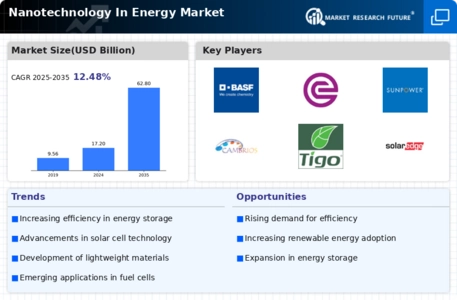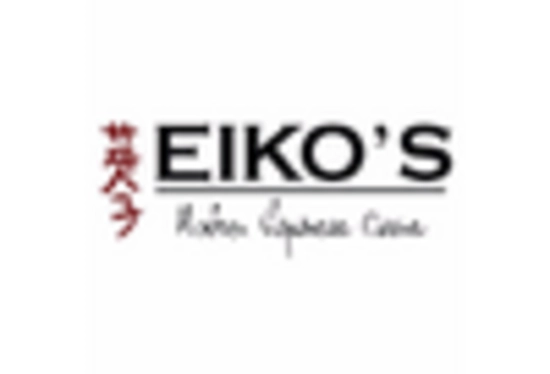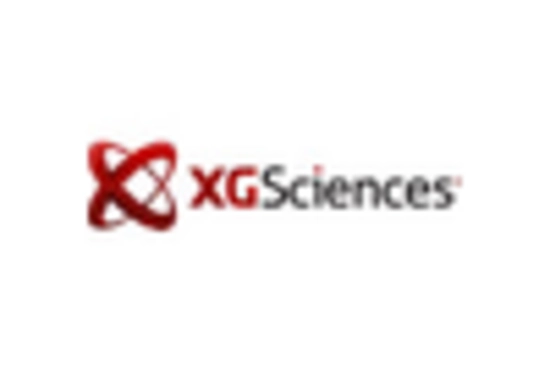Advancements in Nanomaterials
The Nanotechnology In Energy Market is experiencing a surge in advancements related to nanomaterials, which are pivotal in enhancing energy efficiency. Nanomaterials, such as carbon nanotubes and graphene, exhibit remarkable electrical and thermal conductivity, making them ideal for applications in batteries and supercapacitors. These materials can potentially increase energy storage capacity and reduce charging times significantly. Recent studies indicate that the incorporation of nanomaterials in energy systems could lead to a 30% improvement in energy efficiency. As research continues to evolve, the Nanotechnology In Energy Market is likely to witness a proliferation of innovative products that leverage these advanced materials, thereby transforming energy storage and conversion technologies.
Government Initiatives and Funding
Government initiatives play a crucial role in the growth of the Nanotechnology In Energy Market. Various countries are investing heavily in research and development to promote nanotechnology applications in energy. For instance, funding programs aimed at fostering innovation in nanotechnology have been established, with budgets reaching billions of dollars. These initiatives not only support academic research but also encourage collaboration between public and private sectors. The financial backing from governments is expected to accelerate the commercialization of nanotechnology solutions in energy, potentially leading to a market growth rate of over 20% in the coming years. This supportive environment is essential for the Nanotechnology In Energy Market to thrive.
Increased Focus on Energy Efficiency
The heightened focus on energy efficiency is a driving force in the Nanotechnology In Energy Market. As energy costs rise and environmental concerns grow, industries are seeking innovative solutions to reduce energy consumption. Nanotechnology offers a range of applications that can enhance energy efficiency across various sectors, including construction, transportation, and manufacturing. For instance, nanocoatings can improve insulation properties in buildings, potentially reducing energy usage by 20%. This trend towards energy efficiency is likely to stimulate further research and development in nanotechnology, fostering advancements that will benefit the Nanotechnology In Energy Market and contribute to a more sustainable future.
Rising Demand for Clean Energy Solutions
The increasing demand for clean energy solutions is a significant driver for the Nanotechnology In Energy Market. As the world shifts towards sustainable energy sources, nanotechnology offers innovative solutions that enhance the efficiency of renewable energy systems. For example, nanotechnology can improve solar cell efficiency by utilizing nanostructured materials that capture more sunlight. Reports suggest that the integration of nanotechnology in solar energy could boost efficiency by up to 50%. This growing emphasis on clean energy is likely to propel investments in nanotechnology applications, thereby expanding the Nanotechnology In Energy Market and fostering a more sustainable energy landscape.
Technological Innovations in Energy Conversion
Technological innovations in energy conversion processes are reshaping the Nanotechnology In Energy Market. The development of nanotechnology-based catalysts is enhancing the efficiency of energy conversion systems, such as fuel cells and bioenergy production. These catalysts, often composed of nanoparticles, can significantly lower activation energy, leading to faster and more efficient reactions. Current advancements indicate that the use of nanocatalysts can improve fuel cell performance by up to 40%. As these technologies mature, the Nanotechnology In Energy Market is poised for substantial growth, driven by the need for more efficient energy conversion methods that align with global energy demands.


















Leave a Comment